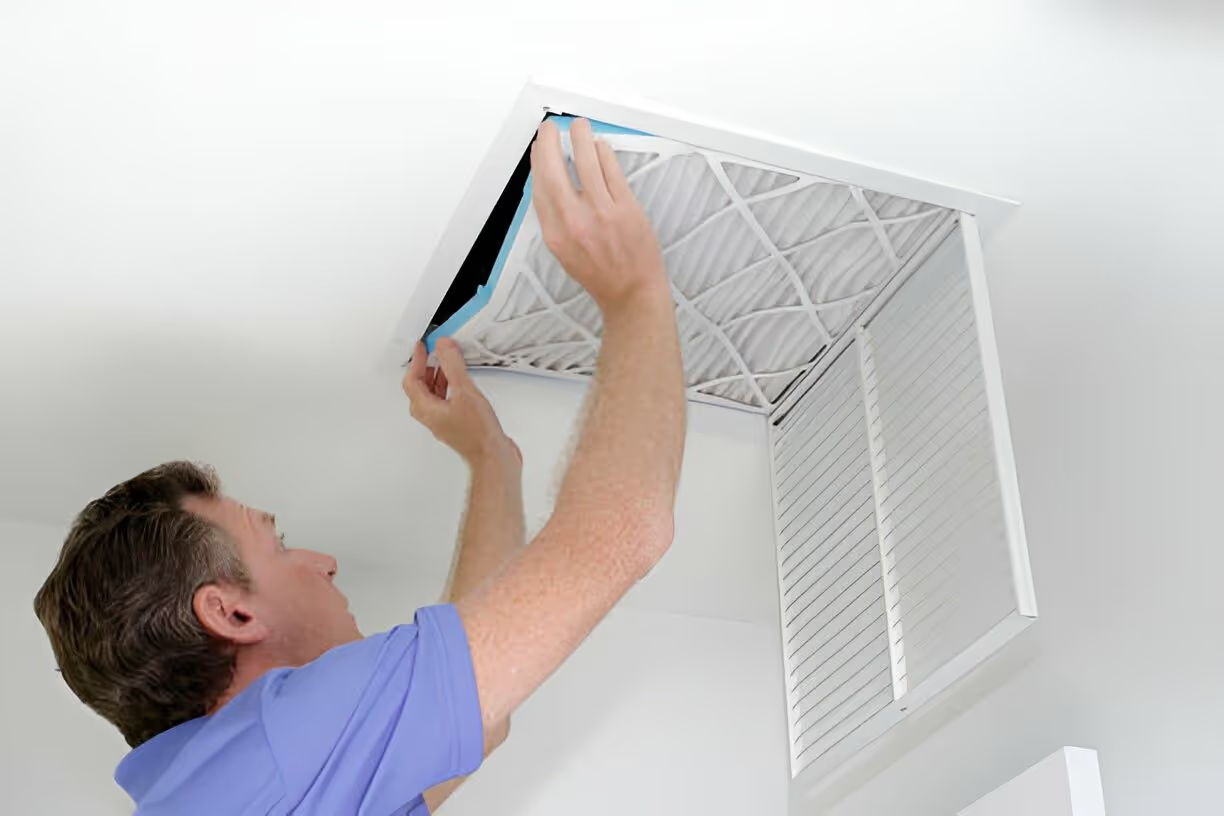Ductwork in Ruskin, FL


Common ductwork issues in Ruskin homes
- Leaky joints and connections that allow conditioned air to escape into attics and crawlspaces, increasing run times and humidity indoors.
- Inadequate insulation, especially in hot attics, causing thermal gain and reduced cooling capacity.
- Poor layout or undersized ducts from original installation or HVAC replacement, resulting in weak airflow to bedrooms or sun rooms.
- Disconnected or crushed flexible ducts in retrofit jobs or older installations.
- Corrosion and damage from coastal salt air on metal components in exposed locations.
- Mold and condensation where humidity and temperature differentials cause moisture buildup on or inside ducts.
- Airflow imbalance between zones or floors, causing hot upstairs rooms and overcooled downstairs areas.
Duct design and new installation
Proper duct design begins with a load calculation for your Ruskin home that considers square footage, ceiling height, insulation, window orientation, and local climate loads from humidity and sun exposure. A well-designed system specifies duct sizes, run lengths, and branch layouts to deliver balanced airflow without excessive static pressure.
Key steps in new duct installation:
- Conduct heat load and airflow calculations specific to the home and climate.
- Select materials and insulation suited for high attic temperatures and coastal conditions.
- Route ducts to minimize long runs and bends that reduce airflow.
- Install properly sealed plenums and takeoffs to prevent leakage.
- Commission the system with airflow measurements and static pressure checks.
Duct replacement and repairs
Replacement is recommended when ducts are severely corroded, crushed, severely undersized, or repeatedly failing. Repairs are effective for isolated leaks, damaged fittings, or sectional insulation replacement.
Common repair processes:
- Locate leaks and gaps using pressure testing and visual inspection.
- Replace damaged sections of flexible or sheet metal duct as needed.
- Repair broken plenums, boot connections, and return paths.
- Restore or upgrade insulation following Florida code and best practices to limit heat transfer.
Duct sealing and insulation to prevent leaks and improve efficiency
Sealing and insulating ductwork is especially important in Ruskin because attic temperatures can exceed indoor setpoints by 40 degrees on hot days. Proper sealing reduces conditioned air loss and moisture infiltration; adequate insulation slows heat gain.
Best practices:
- Use mastic or approved foil-tape for long-lasting seals at joints and takeoffs.
- Insulate ducts in unconditioned spaces with insulation rated for hot climates and HVAC use.
- Protect insulation from moisture and pests; consider closed-cell spray insulation for problematic attics.
- Seal and insulate return pathways and boots to maintain balanced system performance.
Airflow balancing and zone controls
Airflow balancing ensures every room receives the correct airflow calculated during design. In Ruskin homes with mixed sun exposure or multiple levels, balancing can significantly improve comfort.
Options include:
- Manual balancing using dampers and measured airflow adjustments.
- Electronic zone controls with motorized dampers to independently control temperatures in separate areas like upstairs bedrooms and sunrooms.
- Integrating zoning with modern thermostats and humidity-based strategies for more precise comfort control in humid coastal climates.
Diagnostic testing: duct leakage and airflow measurements
Diagnostic testing quantifies problems so fixes are targeted and verifiable. Common tests used in Ruskin homes:
- Duct leakage testing using a duct pressurization tool to measure the percent of system airflow lost to the outdoors or unconditioned spaces.
- Airflow measurements at supply and return registers with anemometers or flow hoods to confirm CFM distribution.
- Static pressure testing to identify restrictions causing reduced performance.
- Thermal imaging and smoke testing to locate insulation voids, leaks, and poor sealing.
Results inform whether sealing, repairs, or a full rework is required and provide baseline numbers to verify improvements after work is completed.
Materials and access considerations
Material selection should consider Ruskin’s coastal humidity, attic conditions, and potential for storm exposure.
- Rigid sheet metal ducts are durable and resist pests and crushing; treat exposed metal for corrosion resistance.
- Flexible insulated ducts are practical for tight spaces but must be supported and protected from compression.
- Insulation types should be rated for high attic temperatures and resist moisture absorption.
- Access points for inspection and cleaning should be planned during installation; attic access, closet returns, and removable grille access make future diagnostics simpler.
Timelines and project planning
Typical timelines for ductwork projects in Ruskin depend on scope:
- Diagnostic testing and assessment: half day to one day.
- Targeted repairs or sealing: same day to two days for most homes.
- Full duct replacement or new system design and installation: two to five days for average single-family homes, longer for complex or multi-zone systems.
- Airflow balancing and final testing: a half day to one day after major work is complete.
Planning should account for permitting where required and scheduling around hot-season workloads and potential storm windows.
How proper ductwork improves comfort and system performance
Well-executed ductwork reduces humidity issues common in Ruskin, provides consistent temperatures throughout the home, lowers HVAC run times, and reduces strain on expensive equipment. Proper sealing and insulation decrease the risk of condensation and mold, improving indoor air quality and occupant health. Balanced airflow and zoning deliver targeted comfort in sun-exposed rooms and upstairs living spaces while improving overall system reliability.
Maintenance tips for Ruskin homeowners
- Inspect attic ducts annually for signs of damage, loosened connections, or insulation deterioration.
- Keep supply and return grilles clean and unobstructed.
- Schedule duct leakage testing if HVAC bills spike or rooms become unevenly conditioned.
- Address attic ventilation and insulation to reduce duct thermal loads.
- Consider humidity control strategies and zone controls for homes with persistent hot/humid rooms.
Proper ductwork tailored to Ruskin, FL climates protects comfort and extends HVAC life while lowering energy use. Targeted diagnostics, the right materials, and climate-aware design are the keys to reliable, efficient performance in coastal Florida homes.
Service Areas


